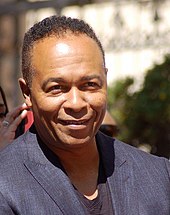Patrick's Wonderful World of Film and TV
Welcome to my blog series about my passion to the movies and television. I hope you enjoy what I have to say when I express my opinions and you are free to have your own thoughts.
Tuesday, December 24, 2024
The History of Roger Ebert's Movie Home/Video Companion
Saturday, November 18, 2023
How The 90s Indie Boom Changed And Challenged American Cinema?
In the 90s, a new generation of younger filmmakers were making their most renowned works either in or out of the major Hollywood studios. Their body of works took chances, expanded their scope, and experimented with new ideas on what movies should be. But that all ended in the turn of the new millennium when the studios began hyping smaller films with awards hype and Oscar potential. Let’s examine the rise and fall of the 90s indie film boom.
How It All Began?
The 90s indie boom was Generation X's answer to the New Hollywood movement of the late 60s and 70s, when a new generation of directors have gained power and made their most renowned works year after year. But in the late 70s and early 80s, George Lucas and Steven Spielberg have created the summer blockbuster trend with Jaws, Star Wars, and Raiders of the Lost Ark, while remaining director-driven Hollywood films like Heaven's Gate and One from the Heart turned out to costly box office bombs. As a result, the major studios regained control, and concentrated on selling high concept, crowd pleasing blockbusters. This also meant making endless sequels, planting the seeds of Hollywood's current obsession with franchises.
Many critics and film historians have considered the 80s to be the worst decade for American movies because of this, but amidst of all of Hollywood's hunger for the opening weekend, there's a smaller window for other types of movies and directors like The Coen Brothers, David Lynch, John Sayles, John Singleton, Spike Lee, Oliver Stone, Gus Van Sant, Richard Linklater, and Jim Jarmusch have rose to prominence in the late 80s and early 90s.
Saturday, June 10, 2023
How American Cinema Has Changed: From New Hollywood To The Rise Of The Blockbusters (1970s to the 1980s)
WHERE HAVE I BEEN: 2022 was a really busy year for me. I've been through four family weddings in the past summer and fall. It's also a rough year for me as well, as my cousin just died at the age of 21. I've been to so many family events to the point that I've forgotten my strengths as a writer. But now I'm back, and I'm ready to do what I do best, write passionately about the movies.
In the late 1960s, the major Hollywood studios seem to be out of touch with what the current generation of movie goers wanted to see. The old guards that were running the studios had either died or retried, and audiences were tired of the big budget epics and musicals that have been dominating the market since the 1950s, when Hollywood was threatened by television. Change was very much needed and that change came in 1967 with the release of Bonnie and Clyde.
How Bonnie And Clyde Changed American Cinema
The film's origin was a story of Hollywood legend. Studio executive Jack Warner, after viewing a rough cut, hated the movie. He felt that the movie was overly violent and dumped it in small amounts of theaters around the country. It opened to a mixed critical response, but audiences seem to fell in love with this film. With it's frank depiction of sex and violence, anti-establishment themes that resonated with countercultural audiences, and filmmaking techniques that have been borrowed from European arthouse cinema (notably The French New Wave), Bonnie and Clyde, alongside other late 60s hits like 2001: A Space Odyssey, Easy Rider, The Graduate, Midnight Cowboy, and The Wild Bunch, have opened the floodgates of director driven cinema in the 1970s.
The Rise of the American Auteurs
With the major Hollywood studios diminishing power, a new generation of directors have gained more artistic freedom than directors have ever had before. Directors like Robert Altman, Stanley Kubrick, Steven Spielberg, George Lucas, Martin Scorsese, Peter Bagdanovich, Francis Ford Coppola, William Freidkin, Woody Allen, Hal Ashby, and dozens more, have spoke for a generation that have been disillusioned with The Vietnam War and the Nixon administration, an audience that have become increasingly alienated from past generations.
These ambitious directors were influenced by European and Japanese art house cinema, as well as classic Hollywood filmmakers like Orson Welles, Alfred Hitchcock, John Ford, and Howard Hawks. And in taking inspiration from great directors while trying new things, the newer generation of directors have become authors, or as the French call, "auteurs."
As a result of all of this creative power, many film historians and critics have considered the 1970s to be a golden age for American cinema. Of course, any golden age wouldn't last as long as it should have. In the late 70s, Steven Spielberg and George Lucas have inadvertently created a new trend in Hollywood that has had a severe impact in director driven filmmaking: the summer blockbusters.
The Creation of the Summer Blockbusters
Wednesday, May 18, 2022
Batman Begins (How Christopher Nolan Revived Batman And Took Him Seriously)
Eight years after the disastrous Batman and Robin, Warner Bros made a comeback with Batman Begins, directed by Christopher Nolan. Because Batman and Robin was fresh in people's minds, audiences seemed to be skeptical of another film featuring the The Dark Knight. But when people finally saw the movie, they were impressed with its complex story and interesting characters.
How Nolan Made The Right Decision To Focus On Bruce Wayne/Batman?
The very core strength of Batman Begins is its insight on who Bruce Wayne is as a person. We no longer get to see Batman being used as a secondary character in his own franchise. What we got is an insightful character study. We get to see how he thinks and what motivated him to fight crime beyond the death of his parents.
The previous films only gave us surface level details on Bruce Wayne's backstory because the villains stole the show in each film primarily to capitalize on the big names who were portraying them, so we really don't know much about him apart from the basics. Nolan and screenwriter David S. Goyer made the right decision to focus on Bruce Wayne, because it adds a lot to his character.
How Nolan Paid Attention To The Supporting Characters?
In addition to creating a successful origin story for Batman, Nolan and Goyer didn't forget the supporting characters, especially Commissioner Gordon. We finally get to see Batman and Gordon work together.
The previous films depict Gordon as a bystander rather than a real participant to Batman's crime fighting, so he really wasn't given much to do. But with Batman Begins, we get to see Gordon being an active partner this time. We see him at a younger age, trying the best he can to help Gotham City, and is the only one who understands Batman.
You can't go wrong with the casting of Gary Oldman. It's one of his best performances.
Rather than using a traditional villain like The Joker and The Riddler, Nolan makes a wise decision to use the character of Ra's al Ghul, the leader of the League of Shadows.
Rather than depicting him as a typically evil supervillian, he's portrayed as a complex mentor to Bruce Wayne. Both want to achieve the same goals in fighting crime, yet they have completely different ideas.
We see Ra's as Bruce's mentor, teaching him the stealth and martial arts techniques he will later use as Batman. Then they go on their separate ways, because while Bruce wants to fight crime, he doesn't want to kill his enemies. When Ra's finally arrives in Gotham, he plans to punish the city for its crimes by injecting fear-inducing toxin in the city's water supply.
Liam Neeson totally embodies the complexity of the character with his performance. It's hard to see anyone else to play him in this particular way.
Michael Caine is perfectly cast as Alfred Pennyworth. He doesn't portray him as a mere butler, but rather a genuine father figure for Bruce.
Even though he disagrees with Bruce's actions as Batman, we still get the sense that he truly cares for him, since he continues to raise and support him throughout his life.
No disrespect to Michael Gough, who played Alfred in the previous films with the best he could, but Caine offers a far more interesting and complex performance.
My Issues With The Film (And Thankfully I'm Not Alone)
Batman Begins is not without its faults however, and thankfully I'm not the only one who pointed them out.
If you're a fan of the Scarecrow, you might be disappointed with how little he was used in the series. I imagine fans walking into the movie, expecting him to have a bigger impact within the story, only to be disappointed that he was really second fiddle to Ra's al Ghul and his plans to spread fear to Gotham City.
When he arrives in the climax, you'd expect an epic confrontation between him and Batman. But no, he gets tasered by Rachel (Bruce's love interest), and that's it.
You'd think more of the Scarecrow would be used in the sequels, but's that's not the case. He just pops up for a cameo in The Dark Knight and his exploits were resolved at the beginning of the film. Why put the Scarecrow in the franchise and not give him much to do?
I also think Cillian Murphy is miscast as Jonathon Crane/Scarecrow. He looks too young and good looking to play Crane (keep in mind, he actually auditioned to play Batman), since the comics depicted him as an older, much awkward person.
Another issue I have is that the action scenes are sloppily edited. Nolan shoots the action in close ups and the edits are so quick, it's impossible to see what the hell is going on. Thankfully, Nolan showed improvement in directing action not only in The Dark Knight, but also later films such as Inception.
The love story between Bruce and Rachel is a little forced and underdeveloped. It's really down to the lack of chemistry between Christian Bale and Katie Holmes and the limited screen-time, which really didn't establish their relationship enough for the audience to buy in to their love for each other.
I'm not going to comment much on Bale's infamous Batman voice, as I would be beating a dead horse at this point. But I would say this, I liked Bale better as Bruce Wayne than as Batman.
Closing Thoughts
Regardless of its flaws, I still think Batman Begins is a great movie and it might very well be my personal favorite Batman film.
I loved The Dark Knight as well and I have a soft spot for Tim Burton's Batman from 1989, but Batman Begins is the one I watch the most often, mainly because of how Bruce Wayne's journey to become Batman is the focus of the story, and we get to see what he does best.
Christopher Nolan is the right filmmaker to revive Batman, he doesn't play things safe or dumb everything down, and he takes the material seriously, similar to Richard Donner's approach with Superman.
With superb performances, Nolan's sense of verisimilitude, and an effective origin story, Batman Begins has the ingredients to make a solid, entertaining Batman movie. It is truly one of a kind!
Thursday, April 28, 2022
Ghostbusters (An Imperfect But Solid Blend of Comedy and Special Effects) (Part 2) (SPOILERS)
WARNING: The following review might contain spoilers. Watch the movie before reading this review.
Hello and welcome to part 2 of my retrospective on Ghostbusters. Previously, I talked about the film's tumultuous production history, now I discuss how the movie is a solid mix of comedy and special effects regardless of any issues I have.
Ghostbusters have come out when the rise of summer popcorn movies was in full swing after Jaws and Star Wars, but I don't think the general public had high expectations for another big budget special effects driven comedy.
Steven Spielberg made his 1979 WWII comedy 1941, and that movie was a critical and commercial dud because that movie prioritized special effects and not much else, so that movie was a bloated mess.
Director Ivan Reitman has made two successful comedies (Meatballs, Stripes) with smaller budgets, so he took a huge risk by jumping on to a big scale production. But thankfully, any doubts the public might have had were put to rest when they finally saw it.
Audiences were given a big budget special effects-driven comedy with characters they cared about. The film's core strength, to me, is that the Ghostbusters were given individual personalities. This is why I think Roger Ebert's review is valid when he said that the special effects serve the actors and not the other way around. They really develop a strong team with their interactions instead of being props for the special effects.
Reitman made the right decision to tell an origin story instead of throwing the audience into the action. Aykroyd's original idea was to set the movie into the future and the Ghostbusters were already in business, but Reitman felt that it was too bloated. So Reitman basically rewrote Aykroyd's concept into an origin story and set it in modern times, which I think benefits it greatly.
While nobody gives a bad performance, Bill Murray really steals the show as Peter Venkman. Not only he gives joy with his clever one-liners, there are moments when he actually gets serious with the role, such as the scene when the EPA tries to shut down the Ghostbusters headquarters and Venkman protests. It's scenes like this that show Murray's versatility as an actor.
Obviously, the movie is not perfect, as it has its flaws here and there. Some of the initial reviews at the time pointed out that the supporting characters were given little to do. It's not a criticism I necessarily agree with, but I can understand where they are coming from.
Even though I credited the individual personalities of the Ghostbusters and their interactions, it's not always easy for me to remember what the supporting cast did or said that I find funny, since Murray dominated most of the comedy with his improvisations and ad-libs while Aykroyd and Ramis played their roles somewhat straight. Still, there still some funny moments from them, such as when Aykroyd thought about the Stay Puft Marshmallow Man in the film's climax, and when Rick Moranis gets possessed by one of the terror dogs.
The romance with Venkman and Dana Barret feels rushed. She's clearly not interested in him at all when they first meet and only shows interest in him when he becomes famous. Sure, she kisses him after he saves her, but since there wasn't enough time to establish their relationship, I honestly don't buy the chemistry between Murray and Weaver.
Another issue I have is the abrupt arrival of Winston, the fourth Ghostbuster. He kind of does feel tacked on in the second act without even giving us a proper backstory, so we really don't know much about him. As I said in part 1, originally there was much more to Winston when Ernie Hudson read the script, but when filming started, much of his character was omitted.
And lastly, the special effects are mixed in quality. Because of the short production schedule, many effects shots looked rushed, from wobbly blue screen composites, to stiff stop motion animation. The best effects for me were the Ghostly Librarian, Slimer, and Stay Puft Marshmallow Man, and I liked some of the matte paintings and traditional animation. But the stop motion animation of the Terror Dogs disappoint. They just look stiff and poorly processed in the optical printer.
I think the issues I've mentioned might have been the result of the studio rushing the production to meet it's summer 1984 deadline, because by doing that, it kind of does come across like they were trying to capitalize on the rise of the summer blockbusters, since it was a new concept that was established by Jaws and Star Wars.
Despite it's faults, I still think Ghostbusters is a solid film. Mixing comedy and special effects is not easy, as 1941 obviously demonstrated, but the filmmakers did the best they could under a tight schedule to make a solid movie despite its faults. Ghostbusters is a 3.5 out of 4 movie for me.
Saturday, April 23, 2022
Ghostbusters (An Imperfect But Solid Blend of Comedy and Special Effects) (Part 1)
In the summer of 1984, Ghostbusters became a cultural phenomenon. With an estimated budget between $25-$30 million, it grossed $285 million, making one of the most successful comedies of all time. Critics praised the film for its unique mix of comedy and special effects, and Bill Murray's performance was often singled out for high praise. Ghostbusters has since become one of the most popular franchises in Hollywood history. But the movie almost never got made, and almost didn't get made the way it did.
Thursday, April 7, 2022
Raiders of the Lost Ark (The Kind Of Movie That Disney Should Have Been Making In The 70s And Early 80s) (Part 2) (SPOILERS)
WARNING: The following review might contain spoilers. Watch the movie before reading this review.
Hello and welcome to part 2 of my retrospective on Raiders of the Lost Ark. Previously, I talked about the film's production, now I address how George Lucas and Steven Spielberg were innovating with Raiders of the Lost Ark in a time when Disney was being creatively bankrupt after Walt's death.
When it comes to discussing Raiders of the Lost Ark, it's not always easy to add further to what has already been said by countless critics and fans. Everyone knows how flawless this movie is. It's a masterpiece in terms of action, performances, direction, humor, special effects, and storytelling.
Everyone often addresses these aspects, but what's often overlooked by many (except the late film critic Richard Schickel of TIME Magazine), is that this is the kind of entertainment that Disney should have been making during this period. One of Spielberg's influences is Walt Disney, and his movies were more in line with the kind of entertainment that Walt used to make in his lifetime.
After Walt's death in 1966, Disney became a tight knit and conservative community, played things safe with family audiences rather than breaking new ground, and relied on older filmmakers. So the company was stagnating at the time and has given us some awful films such as The Apple Dumpling Gang, Midnight Madness, and Pete's Dragon.
The other studios on the other hand, focused on newer, younger, and more ambitious talent, and created more innovative material, which was lacking from the Disney films from that period. With George Lucas and Steven Spielberg pioneering the summer blockbusters, their movies have more energy and flair with their imagination and creativity.
What makes Indiana Jones one of the most memorable movie heroes is his genuine concern for history. He's not some egotistical, greedy explorer who goes off on adventures for his well being. He wants to collect ancient artifacts and to preserve them in the right conditions, so they will never be forgotten in the years to come. He's the complete opposite of his rival Belloq (Paul Freeman), who only interest in archeology is to plagiarize Jones' research for some fast cash.
In addition to its beautifully executed action sequences and special effects, the movie employs a sense of humor throughout, but it's not done in a cheap slapstick way, like those crappy Disney comedies from the 70s. The humor is very subtle throughout, from the spiders crawling on Indy's sidekick at the beginning of the film, to Indy shooting a swordsman dead because he's too tired to deal with him. These moments don't jar with the film's tone at all and nicely complements the action scenes.
The cast all give great performances, especially Harrison Ford. He broke the mold from just being known as Han Solo and further demonstrates his skills as an actor. I think Ford seems to enjoy playing Indy more than Han Solo. After all, he wanted Han to be killed off after Empire Strikes Back, but he didn't get his way, and he wasn't given much to do in Return of the Jedi. But with the Indiana Jones franchise, he's center stage while Han Solo is a supporting character, so some people, including myself, see Harrison Ford as Indy than Han Solo, despite being great in both roles.
With the capable hands of George Lucas and Steven Spielberg, Raiders of the Lost Ark has all of the ingredients to make a rock solid summer blockbuster. This is what Lucas and Spielberg were masters of. Unlike what Disney was doing during this period, they have that special talent of knowing what audiences wanted to see. These two were on a roll, especially Spielberg, who snagged with his 1979 comedy 1941, which was a costly dud at the box office. Raiders gave Hollywood the confidence they needed with Spielberg, and he's been an active filmmaker and innovator ever since.
Raiders of the Lost Ark is worthy of all of the praise it gets. It stood the test of time and it's a masterpiece on all fronts. If you never saw it, check it out immediately.
The History of Roger Ebert's Movie Home/Video Companion
NOTE: I'm sorry that I haven't written an article in about a year. A lot has happened since I wrote about the 90s indie scene in Nov...

-
On May 28th, 1993, two iconic video game characters named Mario and Luigi arrived on the big screen. With a budget of $48 million, it gro...
-
NOTE: I'm sorry that I haven't written an article in about a year. A lot has happened since I wrote about the 90s indie scene in Nov...
-
Before I write the article, I would like to tell you about my vacation to North Carolina. I had a good time with my family. We went swimming...
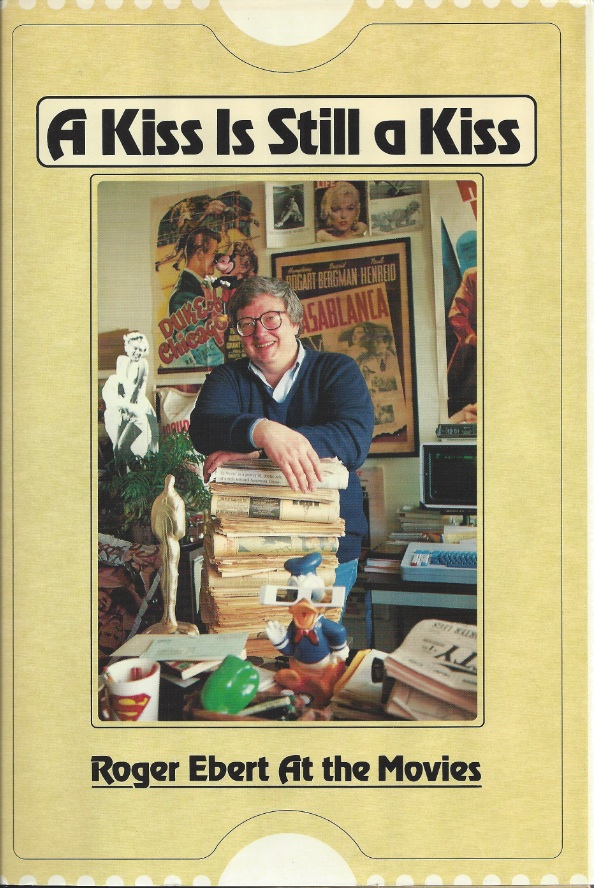


_poster.jpg)

.jpg/220px-Bonnie_and_Clyde_(1967_teaser_poster).jpg)


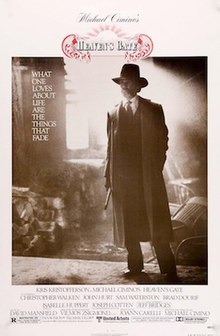
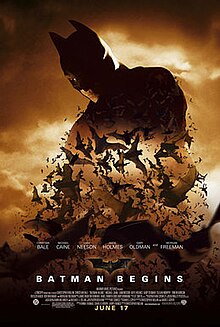

.jpg/200px-Ra's_al_Ghul_Henri_Ducard_(Liam_Neeson).jpg)
.jpg/150px-Michael_Caine_-_Viennale_2012_g_(cropped).jpg)

_theatrical_poster.png/220px-Ghostbusters_(1984)_theatrical_poster.png)
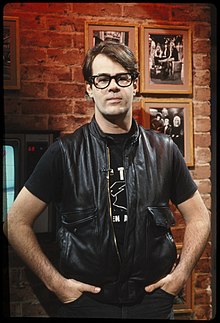

.jpg/170px-Labor_Day_20_(9766111984).jpg)

.jpg/250px-Peter_Venkman_(Bill_Murray).jpg)
.jpg/220px-Ray_Stantz_(Dan_Aykroyd).jpg)

.jpg)
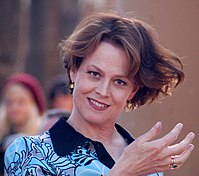

.jpg/220px-Annie_Potts%2C_2019_(T6I0YV6Az8c).jpg)

.png/250px-The_Ghost_Busters_-_1975_TV_series_(logo).png)


